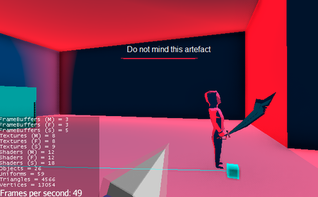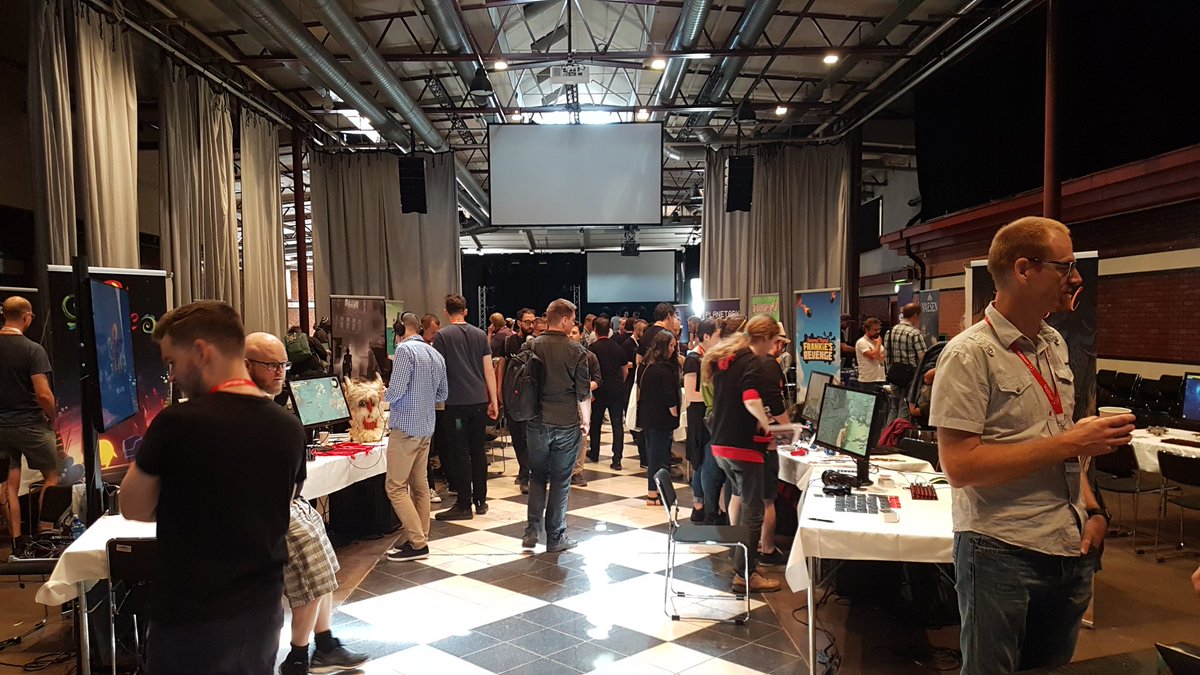Nooooooooooo! Take it alwaaaaaaaaay!
Cool. Now make it 2 meters high.
LOL. How is it going to crawl through the top of your head and control you like a zombie that way? ![]()
Edit: interesting fact, the bug is actually 4x that size and I had to scale it down to “head size”.
Well it could do it in a starship troopers brain bug sort of way I suppose.
Service guarantees citizenship, would you like to know more?
@nehon wanted to see a video of his bug in action. So I multiplied the bug x 30 and shot a video.
As the video description says, watch your head.
hahaha this is funny they are kind of drifting 
Other than that it’s seriously creepy… so I guess this is a good point 
Yeah, the steering is setup for the metal puppet guys and so looks a little strange on the smaller bugs. It’s not that they’re drifting but they overshoot their turns and have to hunt for them back and forth. ie: adding a little ‘friction’ to their turns should solve the issue.
Edit: and I meant to mention in the original video post…
Sometimes game development is super-satisfying. Last night was one of those times. Increasing the count and seeing all of these little autonomous things roaming around. Definitely satisfying.

Having fun with a fresnel shader as an outline shader.
Something something no inverse kinematics support. ![]()
So as some of you know… I use nifty for my gui. This is mostly because I started Spoxel way back when nifty was still supported and things like lemur didn’t exist. If you’ve used nifty long enough, like I have, you start figuring out enough to get by but there are some glaring things that just aren’t possible. Batch rendering is Nifty is pretty awesome… until it isn’t. You can easily insert 3d models into the UI for example. You can render a viewport over the top of them… but then anything that passes over the item breaks that effect. I could try rendering the viewport to a texture… but that caused issues with the batch rendering. So I finally came up with a solution… you need to cut a hole in your UI.
So now anytime I have a 3d model onscreen the 3d model is actually rendered behind the nifty UI and I dynamically adjust the viewport to keep it snapped behind the ui. It limits what I can do with it a little bit, but so far it works.
Another issue that I ran into has to do with large screen sizes. Nifty doesn’t handle resizing from say 1024x768 to a 4k screen size very well. You can, for example, resize it so the nifty UI is twice its normal size but you get all the visual artifacts that go with that. After contemplating everything from completely separate UI definitions I stumbled upon my current solution. I wrote a method which walks the entire UI tree for nifty and resizes, replaces images, and replaces fonts to the new size. So now I have 3 UI “sizes” depending on screen resolution. The Screenshot below is for 1920x1080 but the screen sizing is consistent. To make this work I did need to generate multiple resolutions for all my texture assets. This was made easier by a photoshop script I wrote which automatically reads in all my assets folders and outputs different sizes for me into the correct directories.
I love this idea.
Knowledge is powa <3
Sounds like you became an expert after hours and hours of working and trying with that specific code (nifty). You earned a hearth from me for that.
So, my 3 day long exhibit at Nordic Game in Malmö, Sweden is done. 
Those of you who don’t remember or didn’t see the other post about half a year ago, we won the local Slovenian Games Conference quarter final of the Nordic Game Discovery Contest - which made us eligible to exhibit at Nordic Game for free, with AMD sponsoring the PCs.
They also printed us this dope rollup I designed which of course I silently packed and left with afterwards 
The semi finals were us and about 15 or 16 other games from all around Europe which turned out to be mostly from actually legit studios, unlike our small team  So it’s really no surprise that we didn’t get into the final 4 (which I was kind of counting on and didn’t really have the final presentation ready
So it’s really no surprise that we didn’t get into the final 4 (which I was kind of counting on and didn’t really have the final presentation ready  )
)
At least the semi final presentation went well and I didn’t make too much of an ass of myself, which is all I wanted.
Otherwise the exhibit went great, people seemed to like the game a lot, made some new connections and met various cool industry people.
The part I was always waiting for when some gamedev was trying it out was the “Is this made in unity?” question. To which I could then reply with what you all already know and see the super big surprise on their face 
There was this one guy who actually knew what Jme (and even Lemur) were, so perhaps people are slowly starting to hear about it. 
Oh and those tiny ships are paper models btw, the larger one with magnets that stick the individual modules together.
I recognize these accelerated rotations !
OpenRTS had the same issue of annoying instant turnaround but the solution WAS NOT rotation acceleration !  Steering machine is a bitch.
Steering machine is a bitch.
Another small thing, maybe not very impressive but I may need it as well.
I started adding a multiselect mode for the Lemur Listbox.
Works fine - now I just need to make the panels “invisible” for mouse events (to use the modified inbuild add function) or add a clickcommand to make them disappear via mouse.
I will see if I can make this until June. After that I may have all functionality in the lemur library that I may need to start with first step of a project (an editor for a game - that will be made afterwards).
I’ve been working on adding a new, second map to my game (although the first is still unfinished  ), and I decided to go with a waterfall theme. I just finished generating the first corner of the mesh for a waterfall that’s going to look (sort of) like the Niagra Falls, although it’s going to be much wider when it’s done
), and I decided to go with a waterfall theme. I just finished generating the first corner of the mesh for a waterfall that’s going to look (sort of) like the Niagra Falls, although it’s going to be much wider when it’s done
To generate the waterfall mesh, I’m placing nodes in the Scene Composer to represent the location of each vertex in the fall. The waterfall is going to span across 8 different scenes when it’s done so this seemed like the best solution. The fall int he gif only covers one scene and only has 10 vertices, but once I place another 50-70 nodes it should span across the entire canyon - but for now I’m going to take a break and come back to finish the waterfall another day with a fresh mindset.

I’ve also been trying to spend some time learning how to properly build my Decal Projection Project and create a repository on github to open source the project since I’ve never gone through the process before, but in the mean time I’ve also been working to eliminate any bugs and tie up some loose ends I had left unfinished with the project.
Seems to me there may very well be a good way to program that and save yourself some time, assuming node placement follows some logical pattern.
The nodes are placed along the irregular U-shape of the terrain that makes up the canyon surrounding the lake, so there isn’t a logical pattern to the shape of the waterfall that I could think of, unless there’s a simpler way to program this that I may not have thought of.
Although I am arranging the nodes in a logical pattern so that it’s easy to generate the mesh once the nodes are placed, and hand placing the nodes in the scene composer kind of reminds me of dragging and dropping vertices in blender to sculpt a model, aside from having to assign a vertex ID to each Node as UserData so I can properly generate the mesh when the scene loads.










